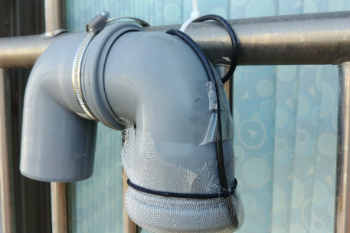
Anyone living in Korea would agree on the severity and recent worsening of fine dust concentration in the atmosphere. What used to be an innocuous number on the meteorologist’s scale, now, has concrete repercussions on people’s lives.
The concurrent fine dust crisis compels many to consider solutions at the macro-level. Citizens question what the government, the elected representatives and the city council are doing to tackle fine dust, a complex environmental issue of interwoven causes. However, this does not necessarily have to be the case. Taking example of countries such as Germany, one learns that a grassroots, citizen project maybe just as good of an initiatory step to enhance the fine dust levels in the atmosphere.
One person who is convinced of the importance of citizen science projects and built his own fine dust sensor, by joining a citizen science project is Professor Thomas Kalinowski (Graduate School of International Studies).
“The biggest merit of the DIY fine dust sensor is the frequent updating of data,” he said.
Indeed, recent weather patterns have shown how volatile and fluctuating air quality can be. Even in the time frame of one hour, which is normally how often conventional weather apps update their information, there is high possibility of turbulent change in fine dust concentration. The threeway information system of sensordatabase-app is precisely able to capture these changes more effectively.
Equipped with easy-to-follow instructions and a straightforward kit, people can put together a highly functional fine dust sensor that can be installed in the exterior of homes and offices. The data collected from the sensor is then relayed and transmitted to an online database, which tracks and monitors trends in air quality. Subsequently, users may choose to view the data more graphically if the information is sent to widely used phone applications such as AirMatters.
“There are increasingly more official stations for fine dust measurement, but the sensor technology allows citizens to obtain independent data at the exact place where they live, work or go to school,” Kalinowski added.
Taking matters into one’s own hands is an important step for overall environmental awareness. Especially in Korea, where environmental movements are yet to gain momentous traction, a small step could ignite social change. The hope is that environmental awareness may rise to the level of civic consciousness on issues such as worker’s rights or women’s rights in Korea.
Kalinowski emphasizes how the fine dust sensor is really at the initiatory step of solving the fine dust issue. Once people are able to monitor air quality data, specific individual choices, local policies and governmental guidelines should be made. Attempting to limit and control car traffic is one such way. In the European Union, diesel cars can be banned in areas where the fine dust (PM10) concentration is higher than 50μg/ m3 on more than 35 days a year – a very low level by Korean standards. The splurging amount of cars on Korean roads should essentially be channeled to public transportation.
“It is now up to the younger generation to push for reform and lead a change in mindset,” Kalinowski stated.
In the bigger picture, the fine dust sensor can help solve two imminent problems in the Korean environmental movement. First is to replenish the lack of mass support. If the general consciousness on environmental issues is to be enhanced, it can generate more effective lobbying power to push for strong policies. The second is to transform the topdown structure of environmental policies into a bottom-up structure. Macroscale, big politics that is uninterested in grassroots movements should reset their priorities and locate in the younger generation, a seed for change.

